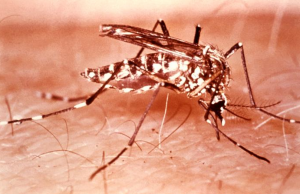NewsDesk @bactiman63
The Colombia Instituto Nacional de Salud reports 32,206 total dengue cases through April 29 this year.

69.9 percent (22,509) of the cases nationwide come from Meta, Tolima, Cundinamarca, Barranquilla, Sucre, Cartagena, Santander, Cali, Cesar, Norte de Santander, Atlántico, Córdoba and The Guajira.
The national incidence for dengue is 90.9 cases per 100,000 inhabitants at risk. Of the 38 departmental and district territorial entities of Colombia, Bogotá It is the only entity without a population at risk for the event.
108 probable deaths from dengue have been reported, of which 18 were confirmed–Sucre (4), Tolima (4), Huila (2), Meta (2), Antioquia (1), Cesar (1), Cundinamarca (1), Magdalena (1), Santander (1) and Norte de Santander (1).
Subscribe to Outbreak News TV on YouTube
Colombia is one of a dozen countries in Central and South America and the Caribbean reporting higher-than-usual numbers of dengue cases, and travelers visiting these countries may be at increased risk, according to the Centers for Disease Control and Prevention.
Dengue is a disease caused by a virus spread through mosquito bites. The disease can take up to 2 weeks to develop with illness generally lasting less than a week.
Health effects from dengue include fever, headache, nausea, vomiting, rash, muscle and joint pain, and minor bleeding.
Dengue can become severe within a few hours. Severe dengue is a medical emergency, usually requiring hospitalization.
In severe cases, health effects can include hemorrhage (uncontrolled bleeding), shock (seriously low blood pressure), organ failure, and death.

